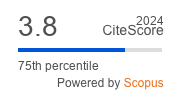Article | Open Access
Welcome City: Refugees in Three German Cities
| Views: | 5007 | | | Downloads: | 3404 |
Abstract: Since late 2015, the authors have studied the refugee crisis in Europe. In this article, we analyze local factors that are significant for urban planning to include in an integration plan through case studies in three cities in Germany. We have chosen to study Germany because of the country’s touted Willkommen Kultur (welcome culture), which was prompted in large part by Chancellor Angela Merkel’s “Flüchtlinge Willkommen” (“refugees welcome”) stance. Now, three years after Chancellor Merkel’s declaration to the world, although international and national policies set many parameters for refugee integration, responses to the uncertainty of the situation are fundamentally informed by local contexts. Germany has adopted a policy of distributing refugees to communities throughout the country according to the so-called “Königstein Key”, which sets quotas for each state according to economic capacity. We have selected case study cities and a county that are at different scales and regions: Borken in Hessen (13,500 people), Kassel County (200,000), and Essen, a larger city (600,000). Here we investigate the ways in which German citizens and refugees interact and integrate, with a focus on the social-spatial aspects of refugee experiences and the impacts on urban planning policy, urban morphology, building typology, and pattern language formation. Beyond crisis, we are looking at how refugees can and will try to integrate into their host countries, cities, and neighborhoods and start a new life and how host communities respond to refugee arrival. Urban architecture projects for housing and work opportunities that help the process of integration are part of this study. Particularly, in this article, we investigate the reality on the ground of the positive Willkommen Kultur and the high expectations and implied promises that were set in 2015 by Chancellor Angela Merkel and German society.
Keywords: building projects; pattern language; refugee acclimatization; urban design; urban transformation; welcome city; welcome culture
Supplementary Files:
Published:
© Hans Joachim Neis, Briana Meier, Tomoki Furukawazono. This is an open access article distributed under the terms of the Creative Commons Attribution 4.0 license (http://creativecommons.org/licenses/by/4.0), which permits any use, distribution, and reproduction of the work without further permission provided the original author(s) and source are credited.


